Contents
Domestic ferrets, or ferrets, are very mobile animals, whose energy and emotional behavior is an indicator of their physical health. Therefore, attentive owners of animals immediately notice when their pets show symptoms of diseases. A change in habits serves as the first warning of an impending disease in ferrets.
ferret infectious diseases
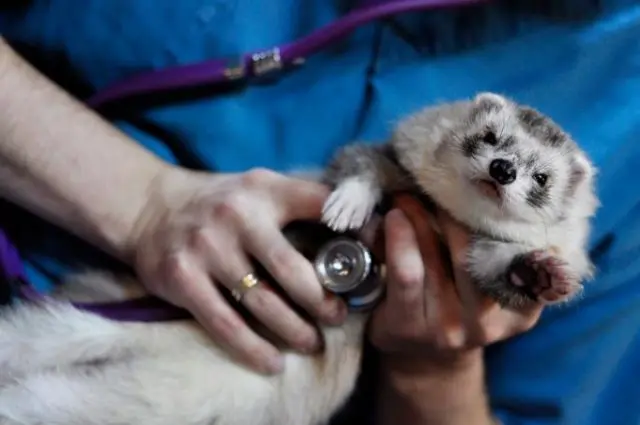
There are not too many infectious diseases that are characteristic of ferrets, but among them there are very dangerous ones that pose a threat not only to ferrets, but also to humans.
Rabies
Ferrets are susceptible to rabies, just like other pets. This viral disease is transmitted through contact with wild or unvaccinated domestic animals through blood or saliva and is dangerous not only for ferrets, but also for their owners. Once in the body, the virus infects the central nervous system, causing irreversible changes in the behavior of the ferret. The disease can proceed latently, not manifesting itself in any way for a long time, which varies from 2 to 12 weeks. If the disease is acute, the ferret has the following symptoms:
- strong salivation;
- vomiting and diarrhea;
- an increase in ferret body temperature by 2–3 °C;
- increased aggression towards other animals, towards humans and surrounding objects;
- rabies, refusal of ferrets from drinking and water procedures;
- difficulty swallowing due to paralysis of the animal’s pharynx;
- dragging the ferret’s hind limbs when moving in the later stages of the disease.
There is no cure for a ferret disease such as rabies. An infected animal must be euthanized. The only way to prevent the disease is timely vaccination of ferrets.
Plague
An equally serious disease in ferrets is plague, or distemper. As in the case of rabies, wild animals, mainly predators, serve as its carriers. Often, causative agents of distemper can be carried by rodents, birds, and even humans on their own clothes and shoe soles. The virus of this disease enters the body of the ferret through the gastrointestinal tract and begins to multiply rapidly. Its incubation period is 1-3 weeks. After its expiration, the ferret begins to show symptoms of the disease, including:
- conjunctivitis accompanied by yellow discharge from the ferret’s eyes;
- loss of animal appetite;
- an increase in the body temperature of the ferret to 41 – 43 ° C;
- reddening of the skin around the nose, lips and anus of the ferret, followed by the formation of a dry scab in these places;
- diarrhea and vomiting in an animal;
- a sharp decrease in body weight of a ferret;
- purulent discharge from the nose.
In addition to the above symptoms, ferrets exhibit a number of other disorders that depend on the form of the disease. In total, 5 varieties of ferret plague are distinguished, each of which affects certain organs:
- pulmonary;
- nervous;
- intestinal;
- cutaneous;
- mixed
The latter variety includes signs of all the designated forms of ferret disease that appear simultaneously. Unlike rabies, plague is not dangerous to humans.
Although there is a cure for distemper, 85% of cases of infection with the disease are fatal to ferrets, due to their small size compared to other animals susceptible to this disease.
Distemper can be avoided by limiting the ferret’s contact with suspicious animals and by timely vaccination. The first vaccination of ferrets against the disease is done when they reach the age of 8-9 weeks, the second – after 2-3 weeks. The procedure is then repeated annually.
Flu
Paradoxically, ferrets are the only pets in existence that are susceptible to the flu. The virus of this disease can be transmitted to an animal from another ferret or even from the owner. In turn, the ferret can also infect humans with the virus.
The symptoms of influenza in ferrets are quite traditional, almost all of them are characteristic of people and include:
- coryza;
- tearing eyes;
- sneezing and coughing;
- temperature increase;
- lethargy and apathy;
- deterioration of appetite;
- drowsiness.
Ferrets with strong immunity are able to overcome the virus of the disease without outside interference within 1 to 2 weeks. If the disease is accompanied by a complete refusal of the ferret from food and greenish loose stools, then the animal is prescribed antihistamines and antibiotics.
salmonellosis
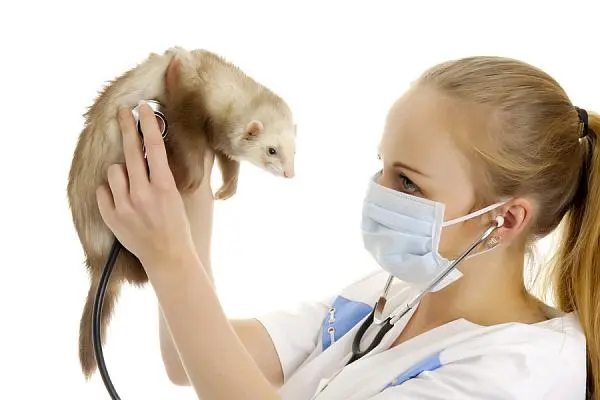
This disease of ferrets is provoked by paratyphoid bacteria of the genus Salmonella. The most common source of this disease is considered to be infected ferrets or food. Ferrets are most at risk of contracting salmonellosis from unprocessed foods, such as:
- meat;
- chicken and quail eggs;
- milk;
- water.
Salmonella pose a danger, including to humans. The peak of bacterial activity occurs in the autumn-spring period. The incubation time of the disease is from 3 to 21 days. Often, young ferrets and puppies up to 2 months old suffer from salmonellosis, but infection of adults is not excluded. Moreover, in the latter, it is more difficult to diagnose the disease without special tests due to a blurred clinical picture and the absence of clear symptoms of the disease.
Treatment and prevention of this disease is reduced to the introduction into the body of ferrets of a special serum with antiparatyphoid properties. Serum with mother’s milk is also transmitted to suckling puppies, therefore, as a preventive measure of the disease, fractional injections should be made to pregnant and lactating females.
infectious hepatitis
Hepatitis in ferrets is rare, but this acute viral disease can be very dangerous if left untreated for a long time. The causative agent of the disease is a virus from the Adenoviridae family, which enters the circulatory system of the ferret through the mucous membranes and causes fever, disorders in the liver and central nervous system.
Ferret disease has 3 main stages:
- sharp;
- chronic;
- subacute.
The acute form of this disease is recognized as the most dangerous. It is characterized by symptoms such as:
- a sharp increase in temperature;
- lack of appetite;
- thirst;
- vomiting;
- anemia.
This kind of disease leads to the fact that the ferret’s condition deteriorates sharply, up to his falling into a coma. After that, the animal dies in a matter of days, if immediate measures are not taken.
The subacute form of hepatitis has the following symptoms:
- the depressed state of the ferret;
- change in gait, unsteady step;
- anemia;
- yellowing of the corneas of the eyes and mouth;
- cardiopalmus;
- brown color of urine when urinating.
The chronic course of the disease is also accompanied by a change in the color of the ferret’s eye membranes and some other symptoms:
- refusal to eat;
- change in stool consistency and flatulence;
- weight loss.
Prevention of infectious hepatitis is tracking the movements of the ferret while walking and limiting contact with unfamiliar or wild animals. There is no treatment in the usual sense for this disease; immunostimulants are prescribed to infected animals to increase the body’s defenses. Ferrets recover from the disease on their own, acquiring lifelong immunity to the hepatitis virus.
Infectious jaundice, or leptospirosis
Ferrets are in the group of animals that are susceptible to leptospirosis. Animals can become infected with jaundice by eating infected rodents or through water containing the pathogen. After 3-14 days of lethospira incubation, ferrets begin to show symptoms:
- fever is observed;
- the skin and mucous membranes of the nose, mouth and eyes of the animal turn yellow;
- lactation of lactating ferrets stops;
- the digestive system of animals does not cope with its functions.
Symptoms may vary, depending on the course of the disease in a particular animal, but the treatment is standard in all cases. A sick ferret is isolated from other living beings, including people, who can also become infected. Therapy of this disease is carried out in several stages using immunoglobulins and antibiotics. For preventive purposes, jaundice is vaccinated.
Aleutian disease
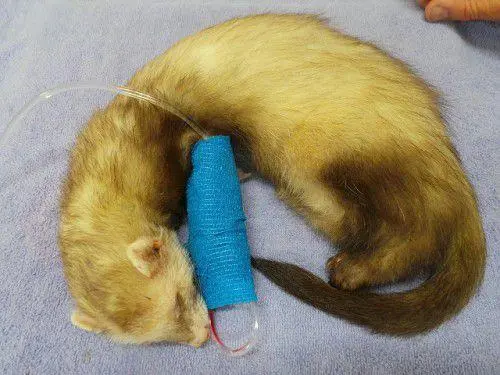
Aleutian disease is a viral disease that is characteristic only of animals of the mustelid family. It strikes at the immunity of the ferret, forcing the body to intensively produce antibodies, which, not finding the infection, begin to destroy the animal’s body. The disease is transmitted from infected animals with bodily fluids, and it is extremely difficult to diagnose, as it can be asymptomatic. The incubation period for the virus of the disease is from 7 to 100 days, and the obvious symptoms of the disease in the ferret manifest themselves shortly before death. Among them note:
- severe weight loss in animals;
- the appearance of bleeding ulcers on the mucous membrane of the nose and mouth of the ferret
- unceasing thirst;
- diarrhea;
- fever;
- drowsiness;
- shedding delay;
- yellowing of the nose and paw pads of the ferret.
There is no cure for Aleutian disease in ferrets. Symptomatic treatment of the disease will only give a temporary respite to the animal.
Non-communicable diseases of ferrets
Non-contagious diseases of ferrets are very different. Although diseases do not harm other people and animals, due attention should be paid to the treatment of a sick pet, since his life may depend on it.
Avitaminosis
Vitamin deficiency, or hypovitaminosis, is a group of diseases caused by a lack of one or more vitamins in the body of a ferret. There are 2 types of disease:
- exogenous;
- endogenous.
Exogenous hypovitaminosis develops in ferrets due to a lack of nutrients in the diet or an unbalanced ratio of available vitamins. Often this disease is observed at the end of winter or early spring, since it is at this time that there is no food that will cover the need for vitamins. In this case, the situation will be corrected by proper nutrition and providing the ferret with vitamin complexes.
Endogenous vitamin deficiency occurs when nutrients are present in sufficient quantities, but they are not absorbed by the body of the ferret due to disturbances in the digestive organs. This type of hypovitaminosis, as a rule, indicates more serious diseases and inflammatory processes in the body of the animal. The disease must be treated as part of the complex therapy of the animal.
Lymphomas, benign and malignant tumors
Lymphoma is a type of cancer that affects the lymphoid tissue. This disease has several types, depending on the area of the body of the ferret that it affects. Lymphoma is divided into:
- On the multicenter, in which cancer cells affect the lymph nodes of the animal, which greatly increase;
- mediastinal. The disease affects the lymph nodes in the sternum and the thymus of the ferret, which may cause a bump in the throat;
- Gastrointestinal. The tumor develops in the gastrointestinal tract of the animal;
- Extranodal. The cancer attacks skin cells, the heart and kidneys, and complicates the ferret’s central nervous system.
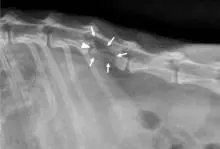
Symptoms suggestive of lymphoma are common to many diseases, making it difficult to diagnose in animals. Affected ferrets have:
- weakness;
- diarrhea with blood;
- vomiting;
- enlarged lymph nodes;
- rarely – eye bleeding.
Unfortunately, there is currently no cure for lymphoma in ferrets. Chemotherapy and steroids can prolong the life of the animal and reduce the size of tumors, but in most cases the medical prognosis remains unfavorable.
Insulinoma
Insulinoma, or hypoglycemia, is another illness common to ferrets. With insulinoma, the body of an animal produces the hormone insulin in large quantities. The disease is associated with inflammatory processes occurring in the pancreas. It is the pancreas that is responsible for the production of this hormone, which, in turn, contributes to a decrease in ferret blood sugar levels. A drop in glucose levels leads to the following clinical picture:
- there is a decrease in weight, disorientation of the ferret in space;
- periods of apathy of the animal are replaced by activity;
- hind legs are unsteady on the surface;
- profuse salivation and a frozen look of the ferret are noted;
- the animal intensively scratches its muzzle with its front paws.
Ferrets with this disease require a special low-carbohydrate diet that is high in protein and fat. In addition, animals are prescribed therapeutic treatment of the disease with the use of drugs Prednisolone and Proglycem, which regulate sugar in the body.
The best alternative treatment for the disease is surgery. During the operation, the very cause of the problem is removed, namely, the tumor of the pancreas of the ferret, which stops the production of excess insulin. The downside of this treatment lies in the fact that many tumors in the animal are very small and difficult to operate. However, the chance of the ferret returning to normal life is still quite high.
adrenal disease
In addition to a pancreatic tumor, ferret owners may also experience various mutations in the animal’s adrenal glands – small glands responsible for the production of sex hormones.
The following symptoms indicate a violation of the functions of the adrenal glands:
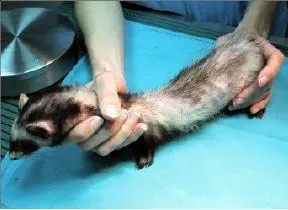
- severe hair loss, partial baldness of the animal;
- lethargy;
- weight loss;
- strengthening the musky smell of a ferret;
- weakness and convulsions in the hind limbs of the animal;
- swelling of the genitals in females;
- difficulty urinating and prostate enlargement in males.
The causes of the disease include:
- genetic predisposition;
- castration of ferrets under the age of 1 year;
- improper feeding.
Therapeutic treatment in the early stages of the disease allows for some time to balance the hormonal background and achieve good health in the ferret. However, the complete recovery of the animal can be achieved only after the operation to remove the tumors.
Enterocolitis, colitis, enteritis
Enteritis and colitis are diseases of ferrets in which inflammation occurs in certain sections of the intestine, small and large, respectively. With enterocolitis, the mucous membranes of both departments are damaged. Bacteria that trigger inflammation are not dangerous to humans and other animals, but can cause a lot of anxiety for a ferret.
Key causes of these diseases include:
- the activity of some viruses and bacteria;
- infection with certain types of helminths;
- injury to the intestinal wall;
- improper feeding.
As a result of damage to the mucous membranes, digestive processes begin to malfunction, which manifest themselves in a violation of the absorption of nutrients and water by the ferret. This often results in:
- to the vomiting of the animal;
- problems with bowel movements;
- increased gas formation in a ferret;
- increase or decrease in body temperature of the animal.
In most cases, when the intestines are damaged, the ferret is painful on palpation of the abdomen, it looks lethargic and haggard. During the course of the disease, he has difficulty defecation, his excrement is black in color and contains unprocessed pieces of food, green or colorless mucus, and often bloody discharge. At this stage, treatment should be started immediately to reduce the risk of dehydration and prevent the disease from becoming chronic.
In chronic inflammatory processes in the intestines of a ferret, along with the above symptoms, malnutrition, vitamin deficiency and a low level of hemoglobin in the blood are noted. In parallel with these diseases, disturbances occur in the work of other organs of the animal.
Therapeutic treatment and a sparing diet prescribed by a veterinarian are effective against these diseases.
Bronchitis, tracheitis

Bronchitis and tracheitis are diseases of the upper respiratory tract in ferrets, and are characterized by inflammation of the bronchi or trachea. Often these diseases are complex, and then we are talking about tracheobronchitis. The reasons can be very different: from allergic reactions to infection of the animal with worms.
Of the main symptoms of the disease can be distinguished:
- cough, reminiscent of vomiting;
- difficulty breathing of the animal;
- increased ferret body temperature;
- dry rales, turning into wet in the later stages of the disease.
With proper treatment of the disease, ferrets quickly recover. The recovery of an animal after an illness will accelerate significantly if the standard conditions of detention are observed: properly feed, vaccinate and treat the animal from worms in a timely manner.
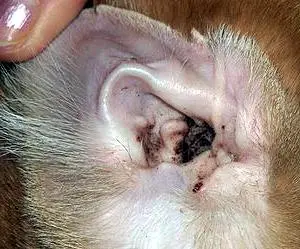
Ear mites, otitis media
Ear mites and otitis are a group of diseases that affect the ear canals of animals. These diseases are relatively rare in ferrets, but the risk of infection increases if other pets, such as raccoons, cats or dogs, live in the house.
The presence of otitis is quite easy to determine visually, carefully examining the ears of the animal. So, the presence of a disease in a ferret is indicated by:
- redness of the tissues inside the ear;
- edema;
- mucous clear discharge from the ears of the animal;
- intense scratching by the ferret around the ears, up to the appearance of wounds and scratches.
Often, the disease is a complication that develops when an animal is infected with an ear mite of the genus Otodectes cynotis. The appearance of this disease in ferrets is accompanied by the following symptoms, which indicate the need for immediate treatment:
- the formation of dark crusts in the ear canal of the animal, as in the photo above;
- unpleasant putrid smell of earwax;
- baldness around the ferret’s head and neck.
On closer inspection, you can see small light-colored swarming mites on the skin around the ferret’s ears.
Medications for ear mites, prescribed by a doctor, help ferrets get rid of parasites fairly quickly. The procedure for processing the animal should be carried out 1-2 times with an interval of 2 weeks.
Poisoning
Although various ferret poisonings account for 1 to 3% of all veterinary visits, ingestion of poisonous substances requires the same immediate treatment as salmonellosis or hepatitis. The most common type of poisoning is feed poisoning, which can be caused by the use of poor-quality feed.
In case of illness, it is important to be able to provide emergency care to the ferret:
- It is necessary to stop the flow of poison into the body of the animal.
- If the poison did get in with the food less than 2 hours ago, the ferret should be vomited with a 1:1 solution of hydrogen peroxide and water. The mixture is poured into the mouth by force at the rate of 1,5 tbsp. l. for every 5 kg of animal weight.
- If more than 2 hours have passed since the poisoning, you need to rinse the ferret’s stomach with a cleansing enema with cold water.
- It will not be superfluous to give the animal 7 – 10 tablets of crushed activated charcoal combined with vaseline oil. The mixture is given in an amount of 3 ml per 1 kg of body weight.
- After that, at the first opportunity, the ferret needs to be delivered to a doctor.
Only a qualified veterinarian will be able to name the exact cause of the poisoning of the animal and provide him with the optimal treatment of the disease.
Diarrhea
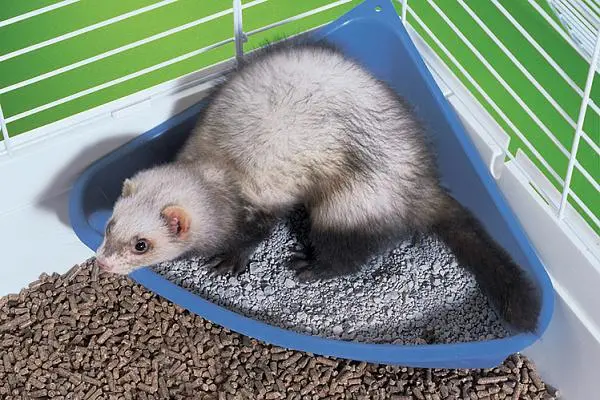
Diarrhea in a ferret is a sure sign that something is wrong with the animal’s body. Moreover, loose stools are a symptom of a wide range of diseases, including sometimes reporting other problems, for example:
- the presence of worms and other parasites in the animal;
- improper feeding of the ferret;
- non-acceptance by the body of the animal of a new feed;
- weakened immunity of the ferret.
In addition, diarrhea can be a ferret’s response to stress during a change of scenery, separation from the owner, participation in exhibitions and other situations that cause nervous tension. In case of stool disorders, it is very important to inspect the ferret and monitor its condition for 12-18 hours. If the animal does not show signs of anxiety and there are no other violations in its lifestyle and appearance, there is no reason to worry. In this case, a seasoned diet will help improve the condition of the animal.
But long-term diarrhea in a ferret that lasts longer than 3 days is a serious enough reason to contact a veterinarian, as it causes exhaustion and dehydration that threaten the life of the animal.
vermin
Fairly undermine the ferret’s immunity and various parasites that enter the animal’s body with unprocessed food or through contact with other animals. There are 3 main groups of parasites that are localized in the intestines of ferrets:
- lamblia;
- cryptosporidiosis;
- coccidia.
The first 2 varieties are dangerous not only for ferrets, but also for humans, as they provoke severe diarrhea and pain in the stomach and intestines.
Ferrets with strong immune systems usually do not show any symptoms of the disease and live according to their usual routine. As a preventive measure, ferrets should be de-wormed once every 1 months and treated with water and food before giving them to animals.
Inflammation of the anal glands
The paraanal glands of a ferret are skin formations near the anus that secrete an odorous liquid. In healthy and strong animals, they are cleared on their own, but sometimes the secret accumulates in the glands and the inflammatory process begins. The area at the anus of the ferret swells, because of which the animal begins to scratch its butt on the floor and lick itself under the tail for a long time.
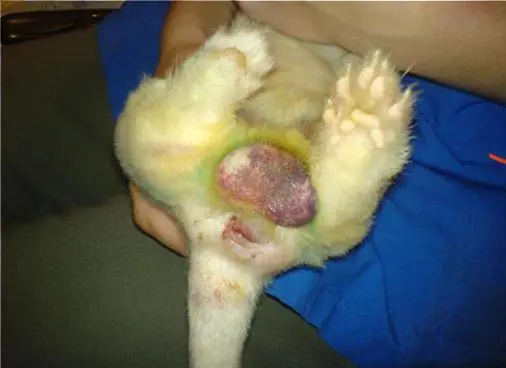
Some veterinary clinics perform the removal of the paraanal glands of ferrets, but very often this is not medically necessary. If inflammation occurs rarely, then they can be dealt with by regular cleaning of the glands from fluid, carried out once every 1-3 months. Ferret owners can clean at home, but the first procedure should be carried out under the supervision of a professional specialist.
Other diseases
In addition to the above diseases, the following diseases of ferrets are considered non-contagious:
- mastitis – inflammation of the mammary glands in giving birth individuals;
- aplastic anemia – accompanied by the release of female sex hormones, which limit the production of red and white blood cells in a ferret
- pyometra and endometritis – diseases accompanied by accumulation of purulent discharge in the uterus;
- cataract – clouding of the lens of the ferret’s eye, turning into blindness;
- cardiomyopathy – disruption of the heart muscle of ferrets, provoking heart failure;
- splenomegaly – an ailment that provokes an increase in the spleen of a ferret;
- urolithiasis disease – characterized by the formation of stones in the urinary ducts of ferrets.
Despite the fact that these diseases are not contagious, they can still cause significant harm to the health of ferrets, up to the death of animals, so alarming changes in their behavior should not be ignored.
In what cases should you urgently contact a veterinarian
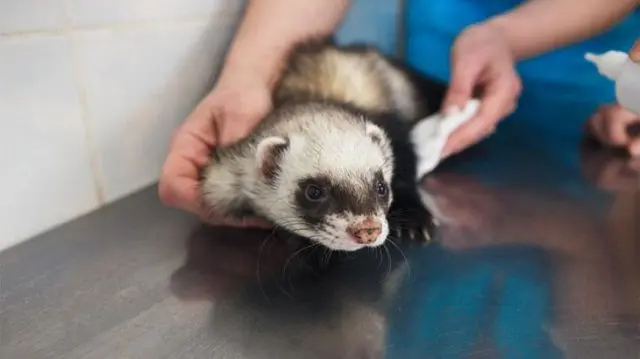
No matter how attached the owners to their pets, not everyone and not always can track the slightest changes in the behavior of their favorite ferrets. Some symptoms, such as poor appetite, one-time sneezing, or short-term diarrhea, often go unnoticed and do not cause concern. However, individual manifestations, which may seem insignificant, should still make the owners wary. So, you need to urgently seek veterinary help if the ferret:
- diarrhea lasts longer than 2 to 3 days;
- severe itching appears, which is not related to “flea”;
- the color of the skin and mucous membranes of the nose, mouth, eyes and anus changes.
- weight changes dramatically;
- hair loss is not associated with molting or the tip of the tail is bald;
- there is no playfulness and sparkle in the eyes;
- increased or decreased body temperature;
- behavior and gait changed.
Conclusion
Any diseases of ferrets in one way or another arise on the basis of improper care, so it is important to provide the animal with the necessary conditions of detention. Treating a pet on your own can be no less dangerous than ignoring the symptoms, and therefore it is necessary to consult a doctor if you suspect the presence of a particular disease.










